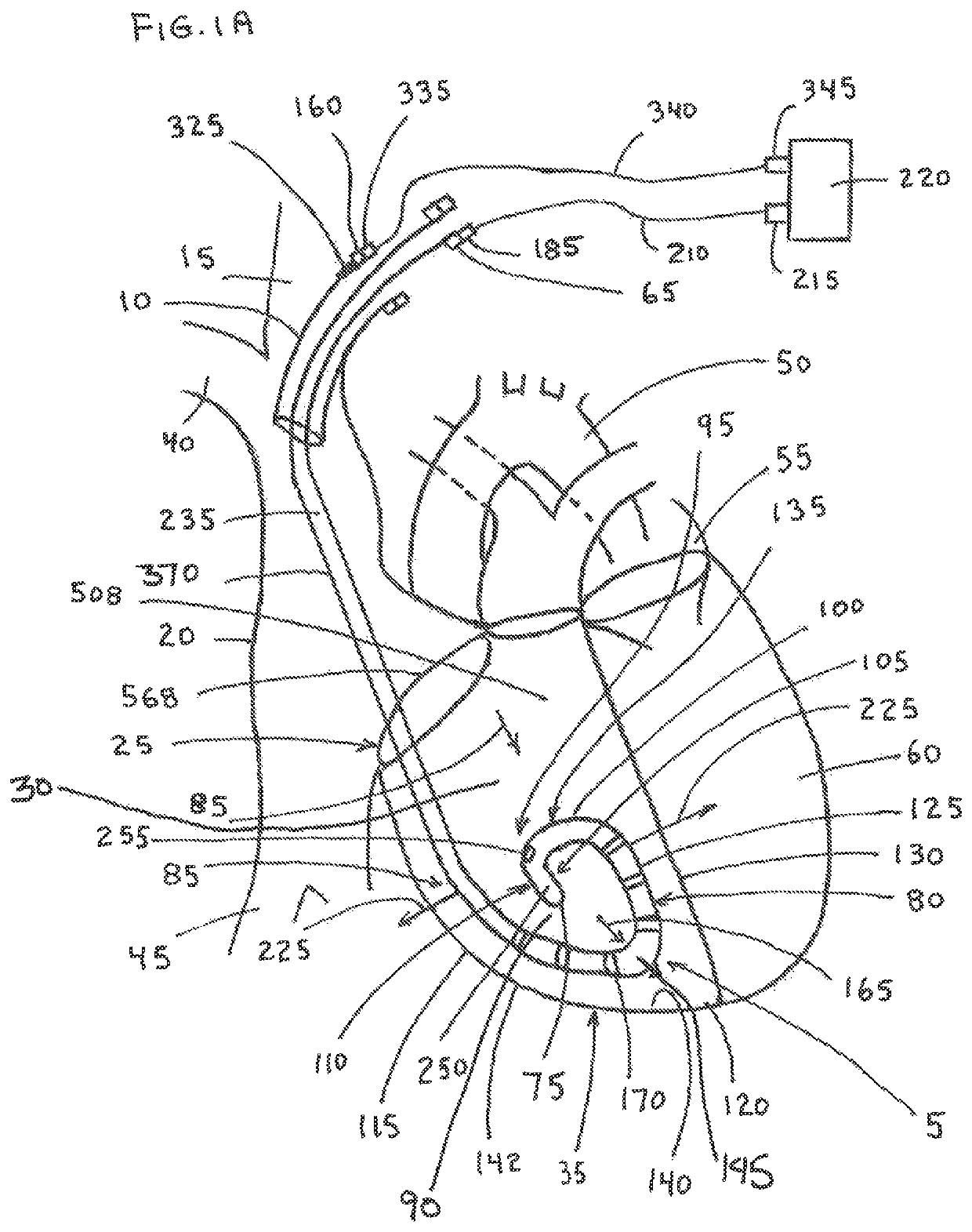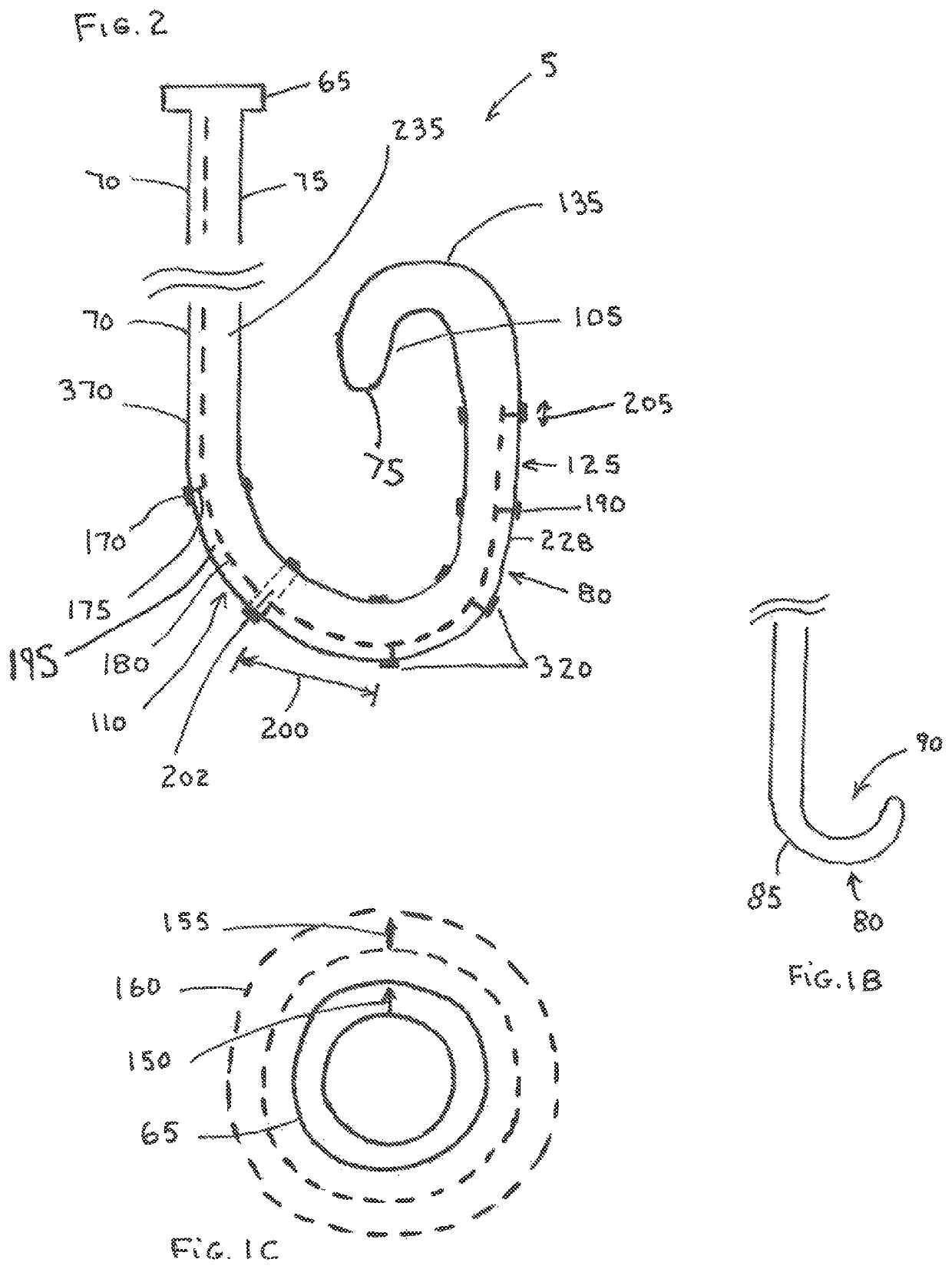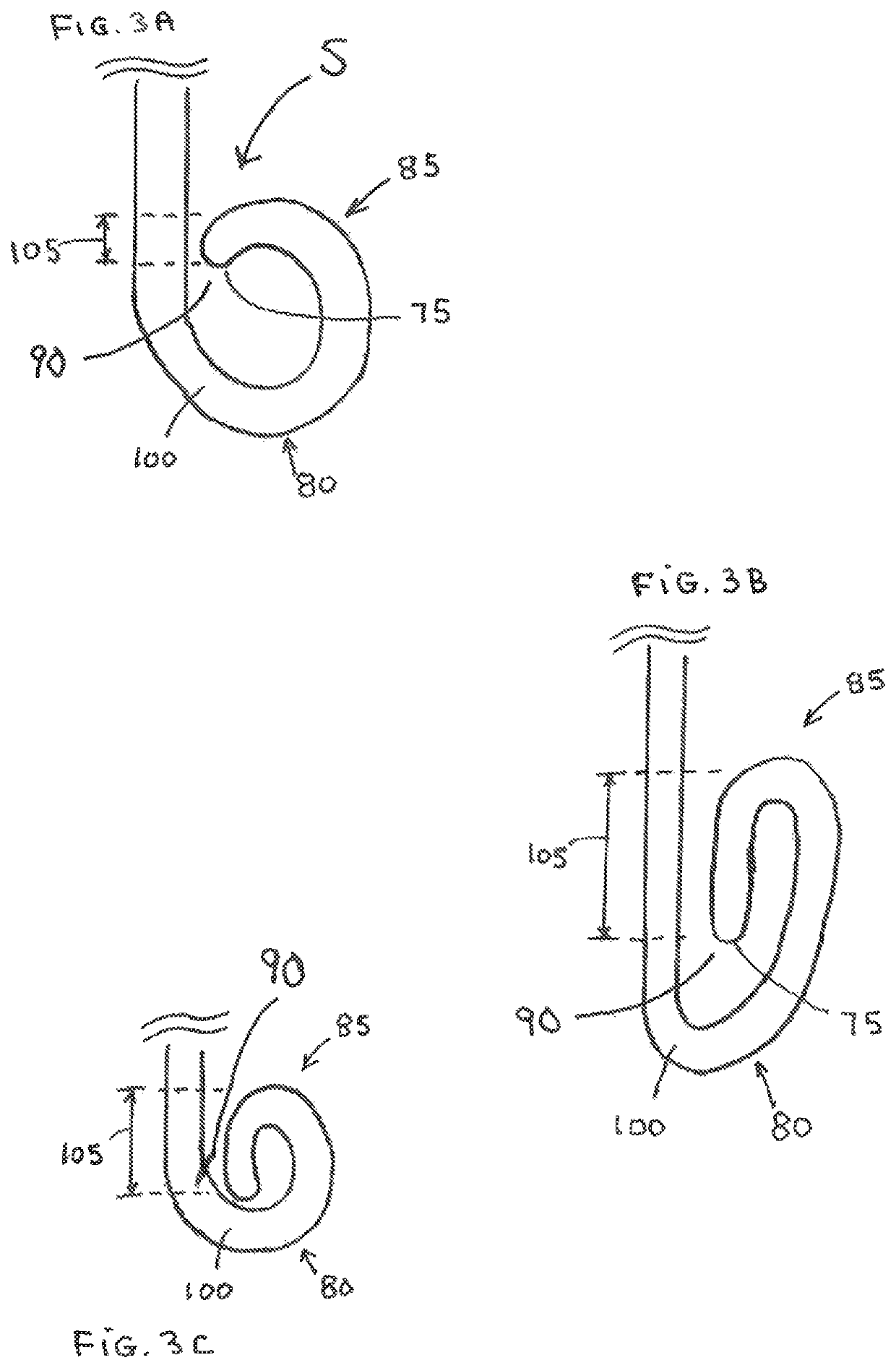Temporary pacing lead
a technology of pacing lead and lead electrode, which is applied in the direction of external electrodes, internal electrodes, transvascular endocardial electrodes, etc., can solve the problems of hemodynamic instability of patients, more difficult to place, and more difficult to remove, so as to facilitate and safely reposition, maximize good position, and effective and stable capture
- Summary
- Abstract
- Description
- Claims
- Application Information
AI Technical Summary
Benefits of technology
Problems solved by technology
Method used
Image
Examples
Embodiment Construction
[0079]FIG. 1A shows an embodiment of the present invention for a temporary pacing lead 5. In this embodiment the pacing lead 5 is introduced through an introducer sheath 10 placed in the internal jugular vein (UV) 15; the pacing lead 5 extends through the right atrium (RA) 20 and across the tricuspid valve (TCV) 25 and into the right ventricle (RV) 30 of the heart 35. It is understood, however, that this invention applies also to other entry sites into the vasculature including the subclavian vein (SCV) 40, the femoral vein (FV) 45, the aorta 50, or other blood vessels or conduits of the body; the pacing lead 5 can also be used to pace the RA 20, left atrium (LA) 55, left ventricle (LV) 60 or other chambers of the heart 35 or body.
[0080]As shown in FIGS. 1A and 2 the pacing lead 5 has a lead manifold 65 located outside of the body, the lead manifold 65 is attached to the lead body 70 Which extends distally through the introducer sheath 10. The lead body 70 of the pacing lead 5 exten...
PUM
 Login to View More
Login to View More Abstract
Description
Claims
Application Information
 Login to View More
Login to View More - R&D
- Intellectual Property
- Life Sciences
- Materials
- Tech Scout
- Unparalleled Data Quality
- Higher Quality Content
- 60% Fewer Hallucinations
Browse by: Latest US Patents, China's latest patents, Technical Efficacy Thesaurus, Application Domain, Technology Topic, Popular Technical Reports.
© 2025 PatSnap. All rights reserved.Legal|Privacy policy|Modern Slavery Act Transparency Statement|Sitemap|About US| Contact US: help@patsnap.com



